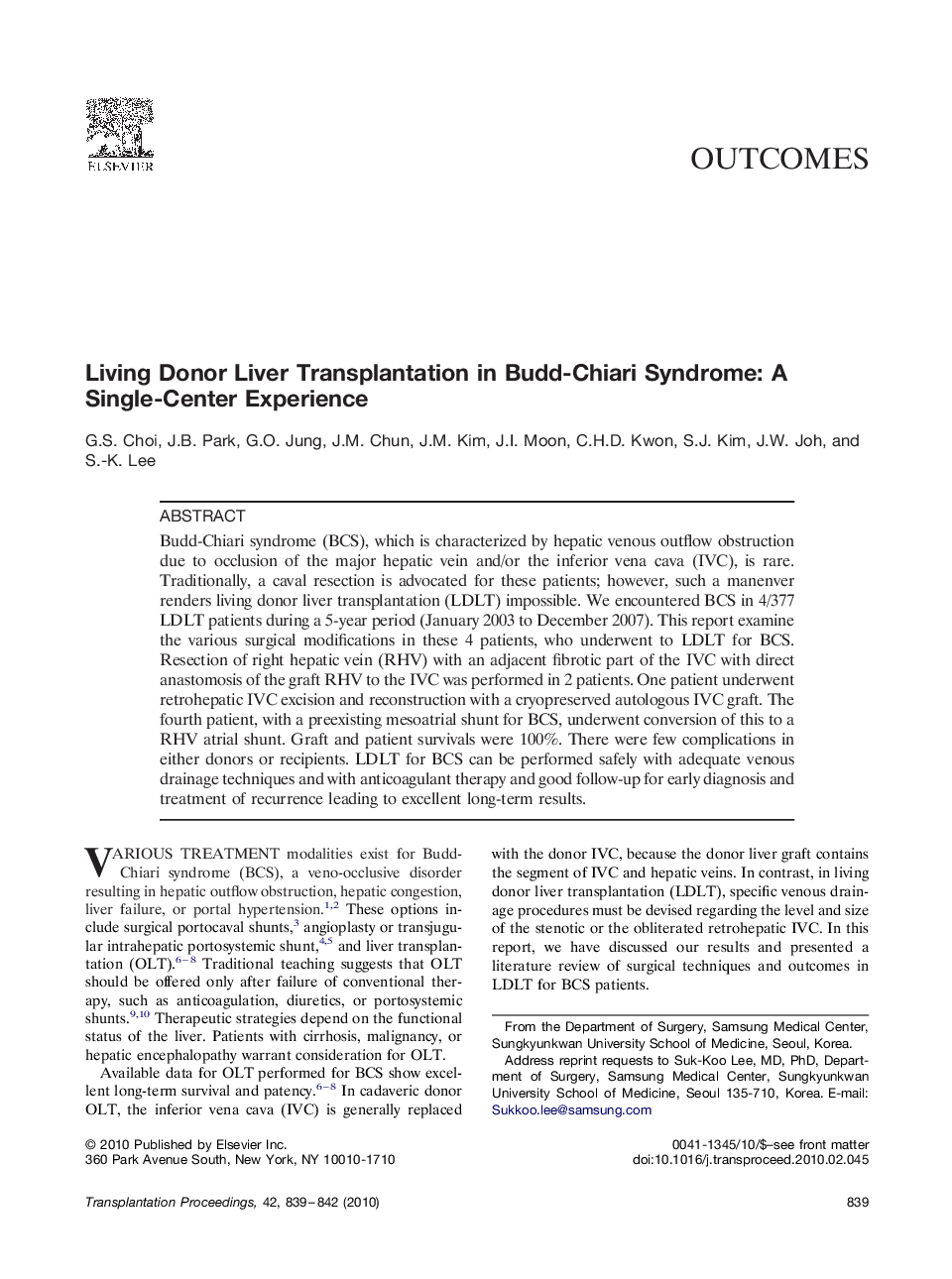| Article ID | Journal | Published Year | Pages | File Type |
|---|---|---|---|---|
| 4258145 | Transplantation Proceedings | 2010 | 4 Pages |
Budd-Chiari syndrome (BCS), which is characterized by hepatic venous outflow obstruction due to occlusion of the major hepatic vein and/or the inferior vena cava (IVC), is rare. Traditionally, a caval resection is advocated for these patients; however, such a manenver renders living donor liver transplantation (LDLT) impossible. We encountered BCS in 4/377 LDLT patients during a 5-year period (January 2003 to December 2007). This report examine the various surgical modifications in these 4 patients, who underwent to LDLT for BCS. Resection of right hepatic vein (RHV) with an adjacent fibrotic part of the IVC with direct anastomosis of the graft RHV to the IVC was performed in 2 patients. One patient underwent retrohepatic IVC excision and reconstruction with a cryopreserved autologous IVC graft. The fourth patient, with a preexisting mesoatrial shunt for BCS, underwent conversion of this to a RHV atrial shunt. Graft and patient survivals were 100%. There were few complications in either donors or recipients. LDLT for BCS can be performed safely with adequate venous drainage techniques and with anticoagulant therapy and good follow-up for early diagnosis and treatment of recurrence leading to excellent long-term results.
